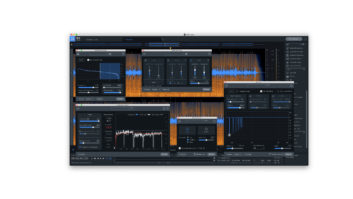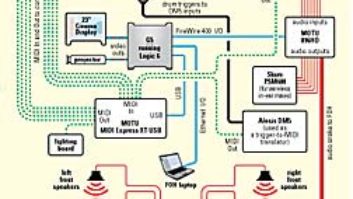What’s your comfort level for computer maintenance or optimization? Can you install a drive, an operating system or memory? Do you take your computer in for service, have a savvy assistant or know someone who makes house calls? The answer reflects your comfort — or fear — level. More than anything, comfort is confidence. Taking the time to back up and have an alternate or backup system to continue working generates peace of mind.
I am not a computer geek, but I’ve built and maintained most of the computers here in Techville, all except Polly’s iMac and the 8500 it replaced. My two primary computers are for video and audio editing, as well as for beta testing and reviews. I love Windows 2000 and hate Windows 98, though I understand why people use it. I love removable drives, have at least one spare drive with just an operating system on it, and, while I am not religious about daily backups, I try to maintain a decent amount of redundancy by copying to another drive (the quick and easy solution) and then ultimately to CD-R and DVD-R. I use Window’s DAT backup utility less and less these days and definitely not for audio files.
UNPLUG AND DISCHARGE
Obviously, I’m a PC person, but some tips apply across the board. Periodically, remove the cover and inspect the system for dust bunnies and make sure that the fans are turning. Fans are cheap; everything else is not, especially time.
Before installing or removing computer hardware, unplug the power; most computers are actually not off when they appear to be, but are in a “sleep” mode: A trickle of power allows a low-current switch on the front panel or keyboard to wake the power supply to deliver full output. Also, be quite conscious of static electricity. Each minor jolt should be a reminder to touch a noncritical device like a wall switch’s cover plate before touching something that helps you earn a living.
PC EYE
PCI slots are not all created equal. Before installing cards, attempt to decipher any strange messages from your computer/motherboard manual and your new hardware’s documentation. It may not be easy: This motherboard example will hopefully raise your awareness of potential conflicts, even if it doesn’t sound like English.
PCI slots 4 and 5 use the same bus master control signal. PCI slot 3 shares IRQ (interrupt) signals with the “extra” hard drive controller. The driver for this controller does support IRQ sharing with other PCI devices, but those devices might not be as generous. The operating system may not allow peripherals to share IRQ signals. Windows NT (at the time the board was manufactured) would not support any card in that slot. On many motherboards, PCI slot 2 is shared with the AGP slot. This can be a problem if a new monster sound card is installed in slot 2 when the video card in the AGP slot is a dual-head type.
CONFLICT MANAGEMENT
If you survived the previous paragraph, here’s an example of how matchmaking applies to the world of computer peripherals. My dual Celeron system was a perfectly happy chappy when all it had to do was edit video and burn DVDs. Then a product review came along that required two PCI slots. Of the five slots, two were already in use for the NIC (network-interface card) and a video-capture card. Remember that using slot 3 would be like modulating keys on the piano before Bach solved that problem. I asked you to remember because I didn’t read the manual first. Who does?
Having thrown caution to the wind, I experienced a few serious stability issues. Figure 1 shows the cards in the slots that made them happy. (I made very good guesses.) I then installed a fancy-ass audio card into the last available slot, the one that just happened to be the slot of terror. No dice. Fortunately, there were two ISA legacy slots into which I installed a generic sound card mostly for MIDI I/O via game port — offering an easy solution.
SERVER CLASS
Computers for home use are generally installed in economically sized cases. This doesn’t work for most audio and video applications where multiple drives and peripheral I/O require real estate. Yes, FireWire and USB solve many problems — both in terms of easy interconnection and portability — although it’s not as tidy a solution as putting everything in one box. For keyboards and mice, I highly recommend a powered hub for USB, especially when the computer is positioned more than six feet from the monitors. The cost is small. The reward is great.
One other solution when building or specifying a computer for media applications is to buy (in IT parlance) a “server chassis” rackmount computer case. At www.stores.ebay.com/superpcparts, I stumbled upon a great deal on a 4U server chassis featuring three vertical and three horizontal drive slots. Who’d believe this beautiful box is under $100? You’ll need to buy a power supply and have it shipped, but that only adds $50 to $75 to the price. Make sure that the power supply is compatible with the motherboard and that the peripheral cables are long enough to reach the farthest drive: 16 inches is too short, while 24 inches will allow the cables to be neatly dressed.
Inside the 4U chassis, everything is more accessible: cables, cards, memory, drives and accessories. The chassis has room for four vertical and three horizontal spaces for drives and breakout boxes that conform to the 5.25-inch standard. Across the top is a hinged horizontal bar supporting two fans that can be positioned over hot spots. Outside, a server chassis is an efficient rack-cabinet consumer, even better when installed on glide rails that let the case slide out without removing rack screws.
FUZZY MOTO
Environment plays a major role in the type and amount of airborne contaminants that can accumulate. Heat and fan noise to keep it in check are critical issues. I recommend a machine room or a closet with ventilation. There are various products to contain and attenuate fan and drive noise. Obviously, minimizing dirt buildup (through filtering and/or maintenance) before it restricts airflow is essential.
For more Ciletti-speak, visitwww.tangible-technology.com.




